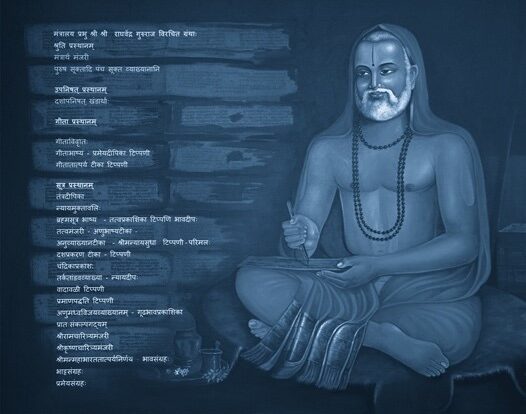Continued from PART II
Raghavendra Swamy’s works – A CHANNEL FOR DEVOTION
Guru Raghavendra Swamy brought alive the classic scriptures, texts and sacred testaments of the Hindhu Madhwa legacy, through his writings, albeit in simple and lucid styles. This not only popularized the Classic works but also brought them out of the orthodox closets and ensured the cultural and classical values reached and influenced the common man. This is perhaps one of the Swamy’s greatest contributions to mankind.
Inspired by Goddess Saraswathi, he composed the Classical exposition called Chandrika, called Chandrika Prakashika. To make Sri Madhwacharya’s Brahmasutra Bhashya more accessible to people who do not have access or the ability to understand complex works, he created it in simple elucidatory styles titled as Tantradipika.
During his stay in Udupi for a year, he also wrote Nyayamuktavali, which is believed to provide a holistic understanding of the Madhwa philosophy. He dedicated his writings Chandrika Prakashika, Tantradipika, Nyayamuktavali and Sudha Parimala to Udupi Sri Krishna. He also composed several Bhakti Geethegalu in praise of the Lord. Amongst the songs, the song Indu Yenage Sri Govinda, is considered an iconic and classical piece that had a miraculous experience associated with it, too.
He wrote numerous works, including commentaries on six of the ten PrakaraNa Granthas of Madhwa, six expositions and commentaries on the Brahma-Sutra; Mantraarthamanjari, a commentary on the first three adhyaayas of the Rig Veda (the same portion as touched upon by Madhwa); Khandaarthas (lucid expositions) on nine out of the ten Upanishads commented upon by Madhwa; commentaries on Madhva’s Gita Bhaashya and Gita Taatparya; an original work on the Bhagavad Gita; two commentaries on Jayatirtha, a commentary on Vyasatirtha, a commentary on the entire miimAmsa suutras of Jaimini, and a number of shorter commentaries and glosses.

